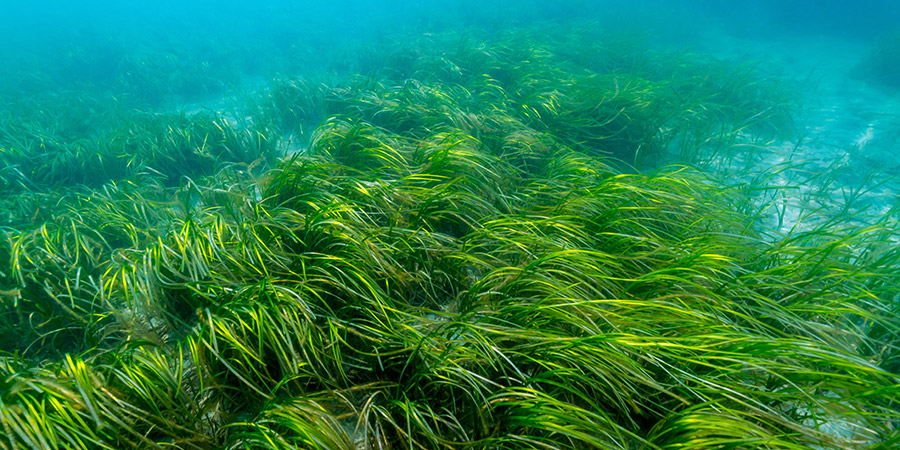
Eelgrass has the potential to capture CO2 and help reach the Danish target of a 19-million-ton CO2 emission reduction by 2030.
The University of Southern Denmark has experimented with planting eelgrass in several Danish estuaries over the last few years to examine where eelgrass could be replanted on a larger scale and thus contribute to CO2 capture and improved biodiversity.
Eelgrass has slowly disappeared from the Danish seabeds over the last century due to the increasing discharge of nutrients, which enhance algae growth. Eelgrass requires light to thrive, and the algae prevent light from penetrating the water to the seabed where eelgrass grows.
Data models show where environmental benefits are greatest
DHI has developed digital ecosystem models that illustrate and predict what the effect would be if the eelgrass was to be replanted in larger areas than the experimental areas included in the project. The models also enable calculations on where to get the most environmental benefits out of the planted eelgrass.
The experts working on the project make use of data on depths, waves, light and nutrients in the water to identify areas best suited for planting eelgrass and validate the findings with the data from the experiments.
The gained experiences from models and experimental data will then be used to calculate what the environmental benefits would be on a national scale.
‘If we find evidence that eelgrass and seaweed can be used to capture and store CO2, eelgrass and seaweed could possibly also be used as climate change agents’
says Professor Karen Timmermann, who is leading the DTU Aqua team involved and is overall Programme Manager of the project.
Anders Erichsen, Head of Environmental Solutions in DHI, explains,
‘We will not gain any systemic effects with individual plantings in dispersed areas, but our ecosystem models make it possible to quantify what kind of large-scale effect we can expect in the long term. This allows for a data-based basis for cost-benefit analysis in which you weigh the environmental benefits and the cost of planting the eelgrass with e.g., the benefits and cost of reducing the discharge of nutrients from land.’
A scientific collaboration for the environment
The eelgrass planting experiments and modelling are part of a cross-functional collaboration between the Southern University of Denmark, Technical University of Denmark, Aarhus University and DHI, contributing with modelling tools and calculations.
The European Water Framework Directive states that all surface water in Europe should as a minimum be of good ecological status no later than 2027. The experiences from the eelgrass project could play an important role in Denmark’s efforts to reach this objective. In addition to investigating effects related to CO2 capture, the project will also look into other derived positive effects on biodiversity in the areas with the planted eelgrass.